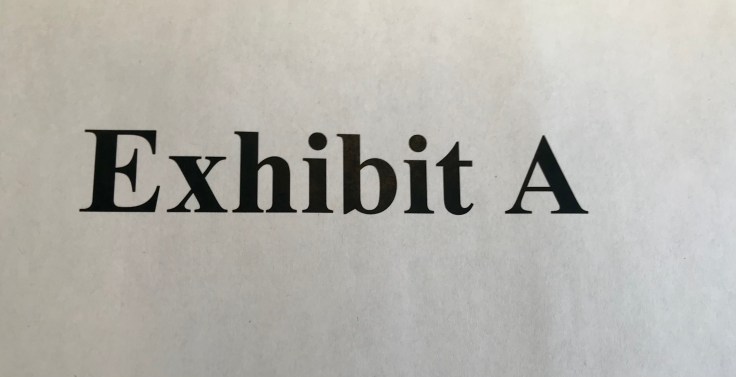
By: Donald L Swanson
“Trillions of dollars”: That’s the amount of civil penalty claims a group of 40 States are asserting against Johnson & Johnson for consumer protection law violations. [Fn. 1]
Such civil penalty claims:
- are independent of, and in addition to, any claims of individuals who used Johnson & Johnson’s talc products; and
- arise from a multi-state investigation of Johnson & Johnson.
The 40 States ask the Bankruptcy Court for permission to participate, with cancer victims, in a previously-ordered mediation process. That process is to focus, by Bankruptcy Court directive, on “a comprehensive resolution” of issues in the case, “which includes, without limitation a chapter 11 plan.”
In its prior mediation order (Doc. 1780), the Bankruptcy Court limits mediating parties to the following groups:
- Representatives of Debtor and its affiliates;
- Representatives of the Official Committees of Talc Claimants; and
- Court-appointed representatives of future Talc-Claimants.
Obviously, that list excludes all of the 40 States.
So, the 40 States complain to the Bankruptcy Court that the prior mediation order:
- Makes their participation in the case “extremely difficult if not impossible”; and
- Contains “overreaching confidentiality provisions” that “undercut the openness by which the bankruptcy process should be conducted.”
Competing with Cancer Victims?
What are 40 States trying to accomplish in the Johnson & Johnson bankruptcy?
- They obviously want to compel compliance with their consumer protection laws; and
- They also want to recover a bunch of money (“trillions” of dollars, no less) for civil penalty claims.
Apparently, they want to compete with claims of cancer victims for that money: the only place to get money, from Johnson & Johnson, is a limited fund of assets — and that’s the same fund from which cancer victims are to be paid.
Distribution Realities
The total current-value of the entire Johnson & Johnson enterprise is estimated by management at $60 billion (with a “b’). So, the competing claims against this $60 billion (as supplemented by future earnings) total many trillions of dollars (with a “t”), including:
- Claims of cancer victims, which are incalculable at the moment—but are likely in the realm of trillions of dollars; and
- Civil penalties for consumer protection violations—also totaling “trillions” of dollars.
Its obvious that Johnson & Johnson’s current asset values, and future earnings, will be woefully insufficient to pay the claims of all cancer victims—let alone another trillions of dollars in civil penalty claims.
Plan Voting
Plan voting realities go like this. The 40 States:
- can never get a Chapter 11 plan confirmed without the affirmative votes of cancer victims; but
- can possibly veto any plan the cancer victims might approve.
Questions
Yet . . .
- Are the 40 States actually going to veto a plan the cancer victims want to approve?
- Are the 40 States actually going to insist that their trillions of dollars of civil penalty claims compete directly with cancer victim claims?
Presumably, the answer to both questions is, “No!!”
Ruling & Its Effect
So, the Bankruptcy Judge rules that the 40 States may engage in their own and separate mediation process with Debtor.
Such ruling:
- keeps the 40 States out of the mediation process between Debtor and the cancer victims; and
- makes no adjustment to any confidentiality provision in the prior mediation order.
By issuing this ruling, the Bankruptcy Judge appears to be forecasting that, (i) civil penalty claims of the 40 States are less important than the cancer victim claims, and (ii) the 40 States need to remove their focus in the bankruptcy from getting money to getting injunctions and similar types of relief to protect consumers.
Outside of bankruptcy, there would be no way to get the 40 States and their civil penalty claims incorporated into the resolution process—or to put them in a distribution place where they belong, in relation to cancer victim claims.
Only a bankruptcy proceeding can do that.
Conclusion
A bankruptcy process is necessary for Johnson & Johnson to assure that all claimants have an opportunity to receive a fair and equitable distribution from scarce assets and earnings.
Such assurance-through-bankruptcy is necessary to deal with competing claims:
- between current and future cancer claims—assuring that current claims don’t exhaust available assets and earnings before future claimants are even identified; and
- between cancer claims and civil penalty claims—assuring that distributions to cancer claims are not diminished inequitably by civil penalty claims.
It takes a bankruptcy process for Johnson & Johnson to get all competing claims under control and relegated to their proper status for distributions from scarce assets and earnings.
——————–
Footnote 1. See Motion of Ad Hoc Committee of States Holding Consumer Protection Claims Seeking Relief with Respect to the Order Establishing Mediation Protocol (filed 4/1/2022, Doc. 1939), in the case of In re LTL, LLC, Case No. 21-30589, New Jersey Bankruptcy Court.
** If you find this article of value, please feel free to share. If you’d like to discuss, let me know.
Leave a comment